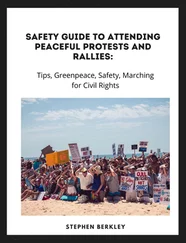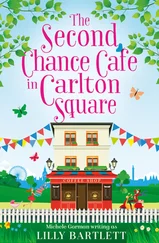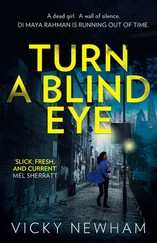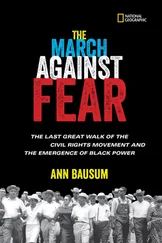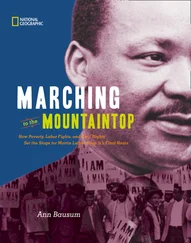Catharine Dworkin - Pornography and Civil Rights - A New Day for Women's Equality
Здесь есть возможность читать онлайн «Catharine Dworkin - Pornography and Civil Rights - A New Day for Women's Equality» весь текст электронной книги совершенно бесплатно (целиком полную версию без сокращений). В некоторых случаях можно слушать аудио, скачать через торрент в формате fb2 и присутствует краткое содержание. Жанр: Старинная литература, на английском языке. Описание произведения, (предисловие) а так же отзывы посетителей доступны на портале библиотеки ЛибКат.
- Название:Pornography and Civil Rights: A New Day for Women's Equality
- Автор:
- Жанр:
- Год:неизвестен
- ISBN:нет данных
- Рейтинг книги:5 / 5. Голосов: 1
-
Избранное:Добавить в избранное
- Отзывы:
-
Ваша оценка:
- 100
- 1
- 2
- 3
- 4
- 5
Pornography and Civil Rights: A New Day for Women's Equality: краткое содержание, описание и аннотация
Предлагаем к чтению аннотацию, описание, краткое содержание или предисловие (зависит от того, что написал сам автор книги «Pornography and Civil Rights: A New Day for Women's Equality»). Если вы не нашли необходимую информацию о книге — напишите в комментариях, мы постараемся отыскать её.
Pornography and Civil Rights: A New Day for Women's Equality — читать онлайн бесплатно полную книгу (весь текст) целиком
Ниже представлен текст книги, разбитый по страницам. Система сохранения места последней прочитанной страницы, позволяет с удобством читать онлайн бесплатно книгу «Pornography and Civil Rights: A New Day for Women's Equality», без необходимости каждый раз заново искать на чём Вы остановились. Поставьте закладку, и сможете в любой момент перейти на страницу, на которой закончили чтение.
Интервал:
Закладка:
no Black person lived independent of it no matter where they
lived, because de jure segregation meant that the authority of law
applauded the debasing of Black people. Every Black person
was affected adversely in their rights and dignity by de jure segregation, humiliated by its very existence. De jure segregation also had this deep and pernicious ef ect: it made de facto segregation
look benign by comparison. Institutionalized racism had two
ostensibly distinct, even opposite systems serving to validate it.
In the South, this racism had the authority of law. In the rest of
the country, the social inferiority of Blacks had the appearance
of being natural, not imposed by force.
De jure segregation was destroyed over many years because
vast numbers of Black people with some brave white al ies
fought it, sometimes at the cost of their lives.
De jure segregation was fought in the courts and in the streets.
“The streets” included shops, restaurants, buses, hotels, parks,
toilets, because of the high priority put by the movement on integrating public accommodations. Much of this activity was il egal. The courts and the streets were not separate arenas.
When the Supreme Court disavowed segregation in public
education in 1954, it was left to Black children to desegregate
the schools. They faced white mobs led by armed police and
elected white of icials. The children, not the Supreme Court,
integrated the schools. When Rosa Parks refused to give up
her seat to a white man on a bus in Montgomery, Alabama, on
December 1, 1955, she was arrested and convicted for breaking a state segregation law. The Black community organized a boycot of the Montgomery buses that eventually led to their
8
Pornography and Civil Rights


desegregation. Endless acts of civil disobedience resulted in
perhaps hundreds of thousands of arrests over a period of at
least a decade; marches led to continuous confrontations with
violent police; civil-rights activists used the courts, sometimes
as litigants, sometimes charged as criminals.
The courts were the courts of segregation; north or south,
federal or state, they had protected segregation. The streets were
the streets of segregation. The police were the police of segregation. The vote was the vote that had kept segregation inviolate. Civil-rights activists confronted the institutions of segregation because they wanted to destroy segregation. They went to where the power and injury were and they confronted the power
that was causing the injury. This power hurt them whether or
not they fought it. In fighting it, however, they forced it to reveal itself—its cruelty and its sadism but also its premises, its dynamics, its structural strengths and weaknesses. Each confrontation led to another confrontation, more and worse social conflict, often more and worse police or mob violence. The courts
led to the streets and the streets led to the courts. The good judicial decisions led to the armed police who did not accept those decisions, which led back to jail and back to the courts. There
were also in time negotiations with two Presidents of the United
States (Kennedy and Johnson) and the Justice Department; then
back to the street, back to jail, back to court. There were battles
and compromises with federal legislators; then demonstrations,
marches, civil disobedience, jail. In the impoverished rural areas
of the Deep South, civil-rights workers taught illiterate Blacks
to read and write so they could pass the literacy tests that were
being used to keep Blacks out of the voting booths. The civil-
rights workers were met with white violence. So were the Blacks
who tried to register to vote, throughout the South.
The social conflict was real. Many were hurt and some were
killed. The conflict escalated with each confrontation, inside
the courts or in the streets. Each confrontation became more
costly, both to the civil-rights activists and to the white-su-
premacist society they were fighting. Each confrontation
forced people throughout the society to ask at least these two
fundamental questions of power and dignity: Who is getting hurt
The Meaning of Civil Rights
9


and why? By attacking de jure segregation on every front, however dangerous or difficult, the civil-rights activists made
the cost of maintaining the racial status quo higher and higher.
Eventually it became too high. The Civil Rights Act of 1964
opened up public accommodations, first in the South, later
everywhere, to Black people. The Voting Rights Act of 1965
opened up the voting booths.
The high cost of maintaining the status quo forced change;
and so did the increasing moral authority of the protesters.
They risked everything. Their bravery indisputably expressed the eloquence of their humanity to a nation that had denied the very existence of that humanity. Each assertion of
rights enhanced the persuasive power of those who demanded equality. The moral authority of the protesters eventually exceeded the moral authority of the state that sought to crush
them. They won access to public accommodations and to the
voting booth; and they won the respect of a nation that had
hated them. De jure segregation no longer set the standard for
the contemptuous disregard of the rights of Black people; instead, Black people set the human standard for courage.
Principles:
1. Confront power by challenging it where it is strongest,
meanest, and most entrenched. (For instance, white supremacy was strongest in the legally segregated South; meanest in the streets, including in public accommodations; and most entrenched in the courts. ) 2. Intensifying and escalating social conflict leads to social
change.
3. The status quo must become too costly for the dominant
society to bear.
4. The moral authority of those confronting entrenched
power can be a force for change.
10
Pornography and Civil Rights


Our contemporary understanding of civil rights—what they
are, what they mean—comes out of the Black experience: ’the
human rights of Black people—their rights of citizenship and
personhood—were violated in de jure and de facto systems of
segregation. Civil-rights legislation grew out of the specific
configurations of Black exclusion from society, dignity, and
rights. Other groups were also af orded legal protection from
discrimination. Where the pat erns of discrimination experienced by those groups were analogous to pat erns of Black exclusion under segregation, civil-rights laws remedied longstanding, systematic deprivations. For instance, the disabled, now protected under civil-rights legislation, have a right of
Читать дальшеИнтервал:
Закладка:
Похожие книги на «Pornography and Civil Rights: A New Day for Women's Equality»
Представляем Вашему вниманию похожие книги на «Pornography and Civil Rights: A New Day for Women's Equality» списком для выбора. Мы отобрали схожую по названию и смыслу литературу в надежде предоставить читателям больше вариантов отыскать новые, интересные, ещё непрочитанные произведения.
Обсуждение, отзывы о книге «Pornography and Civil Rights: A New Day for Women's Equality» и просто собственные мнения читателей. Оставьте ваши комментарии, напишите, что Вы думаете о произведении, его смысле или главных героях. Укажите что конкретно понравилось, а что нет, и почему Вы так считаете.



